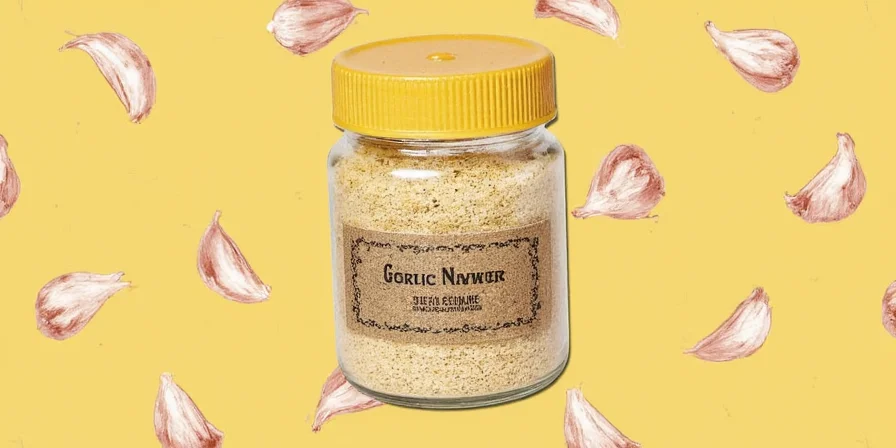Garlic powder equals 1/8 the weight of fresh garlic (1g powder = 8g fresh). This exact substitution ratio solves the #1 problem home cooks face: inconsistent garlic flavor in recipes. Unlike fresh cloves that vary in potency, properly measured garlic powder delivers reliable results every time - no more guessing or ruined dishes.
Exact Garlic Powder to Fresh Garlic Conversion Chart
| Fresh Garlic | Garlic Powder (Weight) | Common Recipe Equivalent |
|---|---|---|
| 1 clove | 0.125g | 1/8 tsp |
| 3 cloves | 0.375g | 1/4 tsp |
| 6 cloves | 0.75g | 1/2 tsp |
| 10 cloves | 1.25g | 3/4 tsp |
Why Garlic Powder Beats Fresh for Consistent Results
Most home cooks don't realize fresh garlic's potency varies by season, storage conditions, and variety - sometimes by 300%. Garlic powder solves this with standardized flavor delivery. Professional chefs use it not as a shortcut, but as a precision tool for reliable results.
- Eliminates guesswork: No more adjusting recipes because "garlic was strong today"
- Prevents texture issues: Won't create unwanted particles in sauces or baked goods
- Heat-stable: Maintains flavor integrity up to 350°F (doesn't burn like fresh garlic)
- Measurable: Weight-based measurements ensure recipe replication
Image Gallery: Practical Garlic Powder Applications





Garlic Powder vs Fresh: When to Use Which
| Situation | Best Choice | Why |
|---|---|---|
| Sauces & Dressings | Garlic powder | Blends smoothly without texture issues |
| Dry Rubs | Garlic powder | Distributes evenly without burning |
| Raw Applications (aioli) | Garlic powder | No raw bite that causes separation |
| Quick Sauté | Fresh garlic | Immediate flavor impact |
Fix Common Garlic Powder Mistakes
These simple adjustments solve the most frequent problems home cooks experience:
- Prevent bitterness: Never add directly to hot pans. Dissolve 1/4 tsp powder in 2 tsp cool oil first.
- Fix separation in sauces: Mix powder with 2x its weight in liquid before adding to emulsions.
- Eliminate clumping in rubs: Combine with 30% oil before mixing with other dry spices.
- Boost flavor in baked goods: Blend with dry ingredients at 0.5% of flour weight (not more).
- Extend shelf life: Store below 50°F with oxygen absorbers (retains 90% potency for 2+ years).
Science-Backed Pairing Guide
These combinations maximize flavor without special equipment:
- With Lemon: Citric acid stabilizes flavor compounds (add powder to citrus-based dressings)
- With Tomatoes: Creates deeper umami in sauces (add during initial simmer)
- With Chocolate: Enhances perceived sweetness in savory rubs (use 1/8 tsp per 4oz)
- With Coffee: Creates complex bitter-sweet profiles in meat rubs (1:1 ratio with coffee)
FAQ: Garlic Powder Questions Answered
How much garlic powder equals one clove of fresh garlic?
By weight: 1g garlic powder = 8g fresh garlic (1:8 ratio). By volume: 1/8 teaspoon powder ≈ 1 medium clove. For precision cooking, always weigh rather than measure by volume.
Why does my garlic powder make sauces bitter?
Bitterness happens when powder contacts high heat (>350°F) before liquid incorporation. Always dissolve in cool oil first or add during initial simmer phase. Stale powder (over 24 months) also develops bitter compounds.
Can I substitute garlic powder for fresh in aioli?
Yes - reconstitute powder with 3x its weight in lemon juice 10 minutes before emulsifying. This mimics fresh garlic's water content while preventing the raw bite that causes separation.
How should I store garlic powder for maximum freshness?
Store in airtight container below 50°F with oxygen absorbers. At room temperature (70°F), it retains 90% potency for 24 months. Every 10°F increase halves shelf life.
Does garlic powder lose nutrients compared to fresh?
Dehydration preserves most beneficial compounds while converting unstable allicin into stable flavor molecules. Powder retains 70-80% of fresh garlic's nutritional value with better consistency.











 浙公网安备
33010002000092号
浙公网安备
33010002000092号 浙B2-20120091-4
浙B2-20120091-4